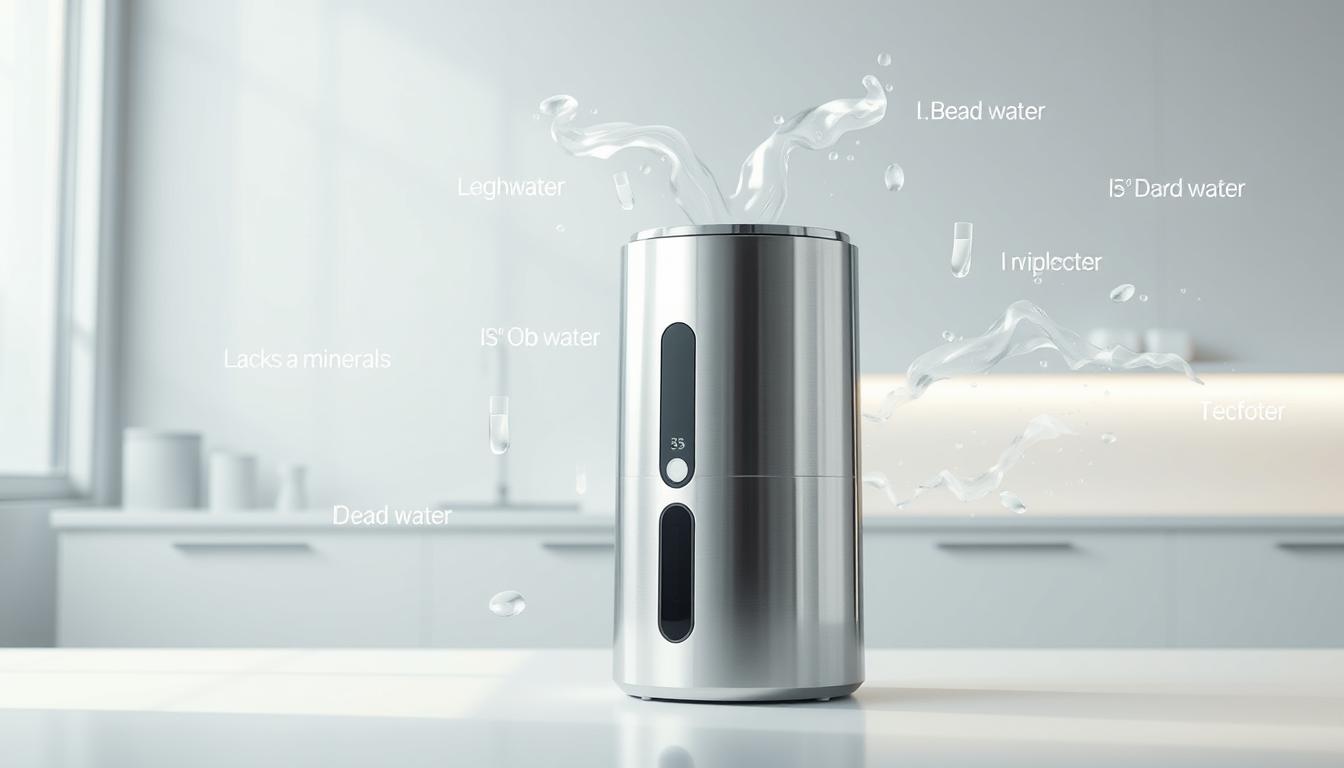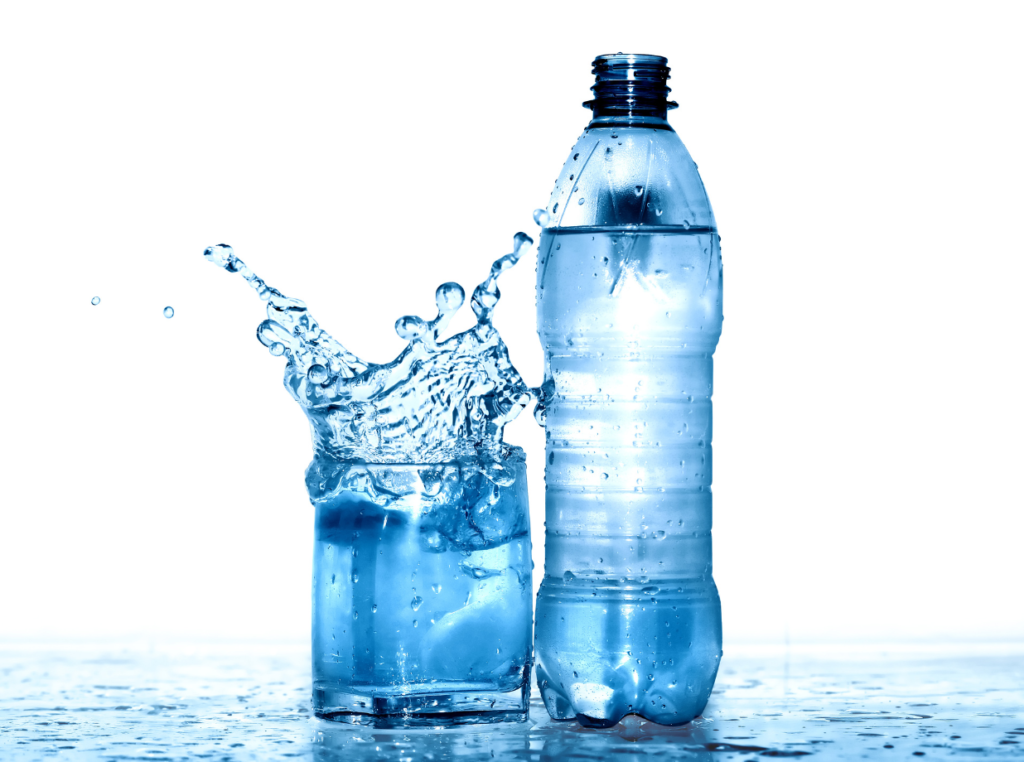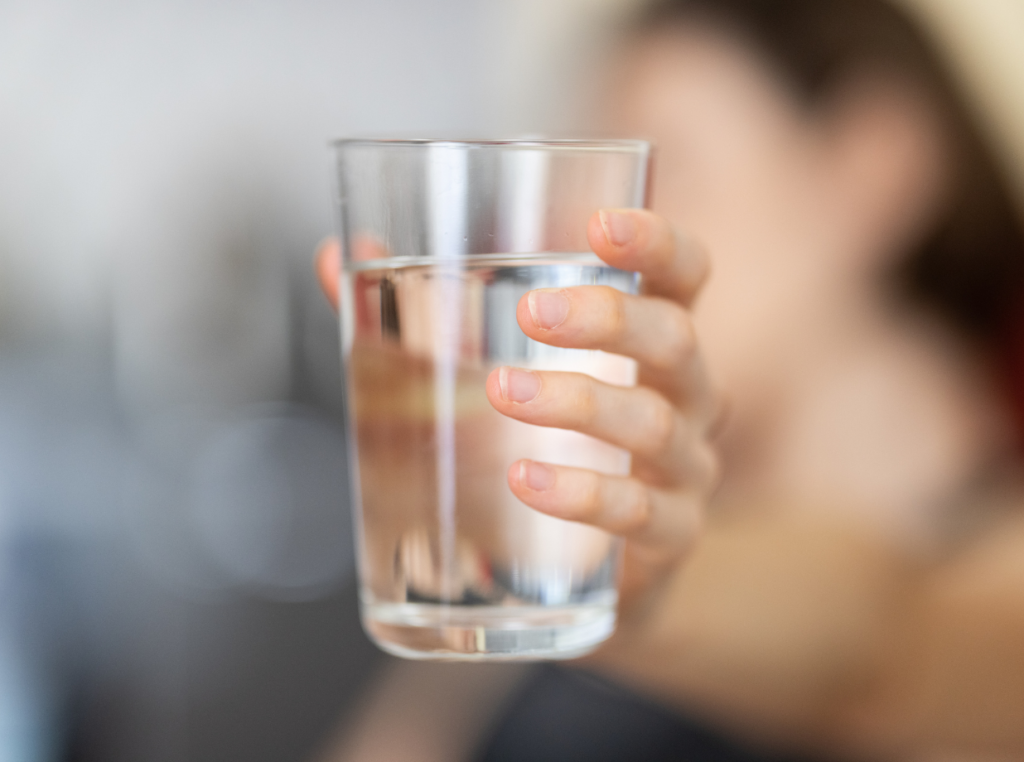Are you aware of the truth behind the myths surrounding water distillation? Many people believe that distilled water is unhealthy or that it tastes flat. But is this really the case?
Distilled water is often misunderstood due to misconceptions. In reality, it doesn’t leach minerals from the body, and its taste is simply a matter of personal preference. This article aims to explore the myths surrounding water distillers and provide clarity on the benefits of using them.
Key Takeaways
- Understanding the truth behind water distillation myths
- The actual benefits of using a water distiller
- How distilled water affects your health
- The taste of distilled water: fact or fiction?
- Why water distillers are a worthwhile investment
The Science Behind Water Distillation
To comprehend the effectiveness of water distillers, it’s essential to understand the science behind them. Water distillation is a purification process that removes impurities from water by exploiting the difference in boiling points between water and its contaminants.
How Water Distillers Work
Water distillers work by heating water to its boiling point, turning it into steam. This steam is then collected and condensed back into liquid form in a separate container, leaving many impurities behind.
The Purification Process Explained
The purification process involves several key steps. First, water is heated in a boiling chamber. As it boils, steam rises and is channeled into a condenser, where it cools down and converts back into liquid water. This process effectively removes many contaminants, including heavy metals and bacteria.
| Purification Method | Effectiveness Against Bacteria | Effectiveness Against Heavy Metals |
|---|---|---|
| Water Distillation | High | High |
| Activated Carbon Filtration | Medium | Low |
| Reverse Osmosis | High | High |
By understanding how water distillers work, it becomes clear that they offer a highly effective method for purifying water, making them a valuable tool for ensuring access to clean drinking water.
Common Myths About Water Distillers Debunked
The truth about water distillers is often clouded by misconceptions that have been circulating for years. Many of these myths stem from a lack of understanding about how water distillation works and its benefits.
Overview of Widespread Misconceptions
One common myth is that distilled water is unhealthy because it’s mineral-free. However, distilled water is not significantly different from other types of purified water in terms of mineral content. Many believe that distilled water, due to its lack of minerals, will leach essential nutrients from the body, causing mineral deficiencies. Yet, this claim is not supported by scientific evidence.
Why These Myths Continue to Circulate
These misconceptions persist due to a combination of misinformation and a lack of awareness about the water distillation process. Education and awareness are key to dispelling these myths and helping consumers make informed decisions about their drinking water.
By understanding the facts behind water distillation, consumers can better appreciate the benefits of using a water distiller. This includes knowing that distillation is a reliable method for removing contaminants and improving water quality.
Myth #1: “Distilled Water Lacks Essential Minerals”
The notion that distilled water is devoid of essential minerals is a common misconception that needs to be addressed. While it’s true that the distillation process removes many minerals, the impact of this on our health is often exaggerated.
The Truth About Minerals in Drinking Water
Drinking water, whether tap or distilled, contributes to our overall hydration but is not a significant source of essential minerals. According to the National Institutes of Health (NIH), mineral absorption is primarily governed by the digestive system, not the type of water consumed.
How We Actually Obtain Minerals in Our Diet
Our primary source of essential minerals is food, not water. A balanced diet that includes a variety of foods can provide all the necessary minerals. For instance, calcium is found in dairy products, iron in red meat, and potassium in bananas.
Comparing Mineral Content: Tap vs. Distilled Water
| Mineral | Tap Water | Distilled Water |
|---|---|---|
| Calcium | Present | Absent |
| Iron | Present | Absent |
| Potassium | Present | Absent |
In conclusion, while distilled water may lack minerals, our dietary intake is the primary source of these nutrients. Therefore, drinking distilled water does not significantly impact our mineral intake.
Myth #2: “Drinking Distilled Water Leaches Minerals From Your Body”
The notion that distilled water depletes the body of minerals is a misconception that has been thoroughly debunked by science. The human body has sophisticated mechanisms to regulate mineral levels, and distilled water doesn’t interfere with these systems.
Scientific Evidence Against the Leaching Theory
Numerous studies have shown that drinking distilled water does not lead to mineral deficiencies. The body maintains its mineral balance through dietary intake, not through drinking water. For instance, essential minerals like calcium, magnesium, and potassium are primarily obtained from food, not water.
- The body’s mineral balance is regulated by the digestive system and kidneys, not by the type of water consumed.
- Distilled water does not leach minerals from the body; rather, it is the quality of the diet that determines mineral levels.
- Drinking distilled water can actually help reduce the risk of mineral overload from contaminated water sources.
What Medical Professionals Actually Say
Medical professionals agree that the myth about distilled water leaching minerals is unfounded. According to experts, the focus should be on a balanced diet to ensure adequate mineral intake, rather than worrying about the type of water consumed.
As noted by health experts, the body’s need for minerals is met through a normal diet, making the type of water secondary in importance.
Myth #3: “Distilled Water Tastes Flat and Unpleasant”
The notion that distilled water is tasteless is a common misconception that needs to be addressed. Many factors contribute to the taste of water, and understanding these can help clarify why distilled water is not necessarily “flat” or “unpleasant.”
The Science of Water Taste Perception
Taste perception is a complex process influenced by the chemical makeup of a substance. In the case of water, its taste is significantly affected by its mineral content. According to the American Chemical Society, minerals such as calcium and magnesium play a crucial role in determining the flavor profile of water.
Factors Affecting Water Flavor Profiles
Several factors can influence the taste of water, including its source, treatment process, and storage conditions. For instance, tap water often contains additives like chlorine, which can significantly alter its taste. In contrast, distilled water is free from such additives, which some people find more palatable.
| Factor | Effect on Taste |
|---|---|
| Mineral Content | Influences flavor profile |
| Source | Can contain various impurities or additives |
| Treatment Process | Affects the presence of additives like chlorine |
As Dr. Andrew D. Eaton, a renowned expert in water quality, once said, “The taste of water is not just about its chemical composition; it’s also about the psychological and physiological factors at play.”
“The human perception of taste is complex and influenced by multiple factors, making the experience of drinking water highly subjective.”
In conclusion, the taste of distilled water is not inherently “flat” or “unpleasant.” Rather, its taste is simply different due to its purity and lack of additives. By understanding the factors that influence water taste, we can better appreciate the unique characteristics of distilled water.
Myth #4: “Water Distillers Are Energy Inefficient”
Water distillation is often criticized for being energy-intensive, but what does the data actually say? Advances in technology have significantly improved the efficiency of water distillers, making them a more viable option for households and businesses alike.
Actual Energy Consumption Data
Modern water distillers are designed to be more energy-efficient than their predecessors. For instance, many contemporary models use advanced insulation and heating elements that minimize energy consumption. According to recent studies, a typical water distiller consumes approximately 3-5 kilowatt-hours (kWh) of electricity to produce one gallon of distilled water.
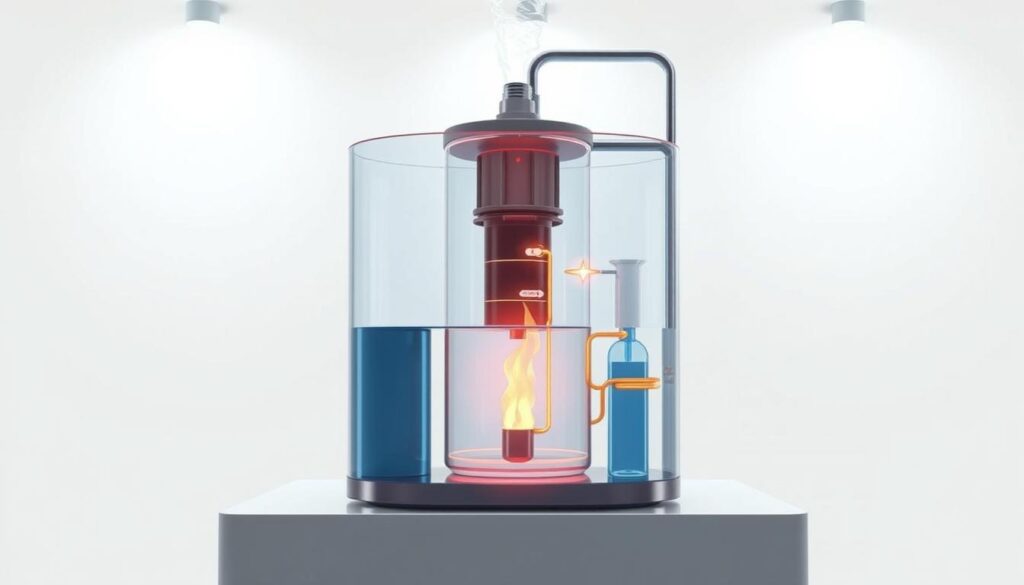
Comparing Efficiency With Other Purification Methods
When comparing water purification methods, it’s essential to consider the energy efficiency of each. Reverse osmosis (RO) systems, for example, use about 2-4 kWh of electricity per gallon, while ultraviolet (UV) light purification systems consume significantly less energy, typically around 0.1-0.2 kWh per gallon. However, water distillers remove a broader range of contaminants, including heavy metals and certain bacteria that RO and UV systems might not capture.
| Purification Method | Energy Consumption (kWh/gallon) | Contaminant Removal Effectiveness |
|---|---|---|
| Water Distillation | 3-5 | High |
| Reverse Osmosis (RO) | 2-4 | Medium-High |
| Ultraviolet (UV) Light Purification | 0.1-0.2 | Medium |
Energy-Saving Tips for Distiller Users
To maximize the energy efficiency of your water distiller, consider the following tips:
- Regularly maintain your distiller to ensure optimal performance.
- Use a timer to turn off the distiller when not in use.
- Choose a distiller with an automatic shut-off feature.
- Consider using a distiller with a built-in energy-saving mode.
By understanding the actual energy consumption of water distillers and comparing it with other purification methods, consumers can make informed decisions about their water purification needs. With the right knowledge and a few simple practices, households can enjoy the benefits of distilled water while minimizing their energy footprint.
Myth #5: “Distilled Water Is Unnaturally Acidic”
The notion that distilled water is unnaturally acidic is a common misconception that needs to be debunked. To understand this, we first need to explore the concept of pH levels in different types of water.
Understanding pH Levels in Different Water Types
pH is a measure of how acidic or alkaline water is. The pH scale ranges from 0 to 14, with 7 being neutral. Water that is neither too acidic nor too alkaline is considered to have a balanced pH. Distilled water, being pure H2O, has a pH of 7, which is neutral.
However, when distilled water comes into contact with air, it can absorb CO2, forming carbonic acid, which slightly lowers its pH. But this doesn’t make it “unnaturally acidic.” In fact, many natural water sources have varying pH levels due to their mineral content and surrounding environment.
How the Body Regulates pH Balance
The human body has a sophisticated system for maintaining pH balance, regardless of the pH of the water we drink. Our kidneys and lungs work together to regulate the body’s acid-base balance. Drinking distilled water does not significantly impact this balance because the body is efficient at managing its internal pH levels.
The key takeaway is that the body maintains its pH balance effectively through its own regulatory systems, regardless of the type of water consumed. This fact underscores the truth about water distillers and dispels the myth that distilled water is unnaturally acidic.
Myth #6: “Water Distillers Can’t Remove Certain Contaminants”
Despite their reputation, water distillers are actually highly effective at removing a wide range of contaminants. There’s a widespread myth that water distillers can’t remove specific pollutants, but what does the evidence say?
Distillation Effectiveness Against Various Pollutants
A 2019 study from the Journal of Environmental Health confirmed that distillation removes over 99% of common waterborne contaminants. This includes bacteria, viruses, and heavy metals, making distilled water one of the purest forms of drinking water available.
Distillation is a highly effective method for removing contaminants because it involves turning water into vapor and then condensing it back into liquid form, leaving many impurities behind.
Comparing Filtration vs. Distillation Technologies
While filtration is effective against many contaminants, distillation offers a broader range of protection. Distillation can remove impurities that filtration might miss, including certain dissolved solids and other contaminants.
As noted by experts, “Distillation is a reliable method for producing high-purity water
“Distillation is a process that can remove a wide range of contaminants, including bacteria, viruses, and heavy metals.”
The benefits of using a water distiller include having access to very pure drinking water, which is a significant water distiller benefit.
Myth #7: “Distillers Are Too Expensive and Impractical”
The notion that water distillers are a costly and impractical solution is a common misconception. In reality, home distillation systems can be quite affordable and provide a continuous supply of distilled water.
Cost Analysis: Initial Investment vs. Long-term Savings
The initial cost of a water distiller can range from $150 to $250, which is a one-time investment. When compared to the ongoing costs of buying bottled water, a distiller can lead to significant long-term savings. For instance, a family that consumes a few gallons of bottled water per week can save hundreds of dollars annually by switching to a home distiller.
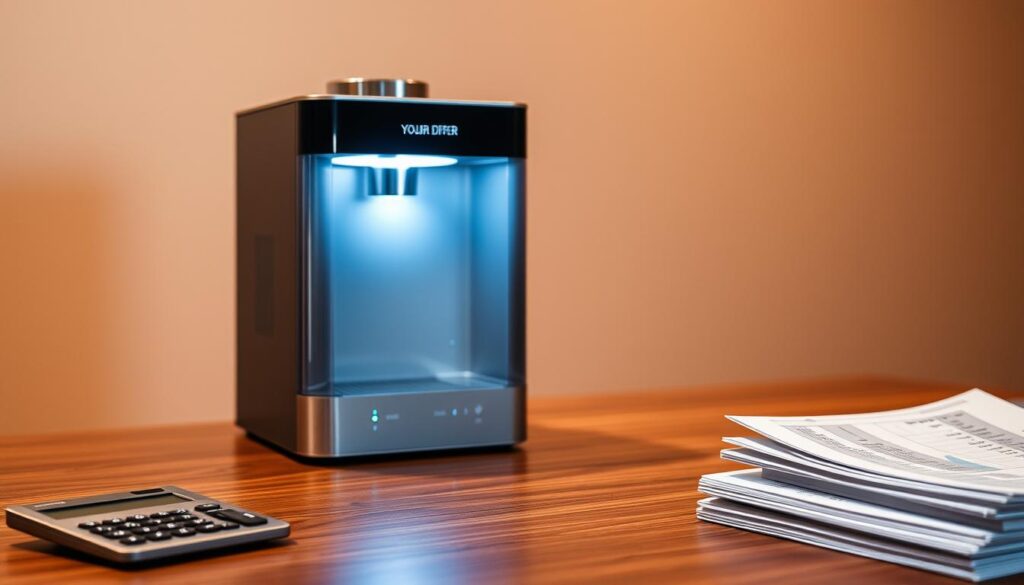
Practical Considerations for American Households
Practicality is another factor where distillers shine. They are relatively easy to maintain, with some models featuring automatic cleaning cycles and replaceable filters. Additionally, having a distiller at home eliminates the need to store and dispose of plastic water bottles, making it a more environmentally friendly option.
- Initial investment: $150-$250
- Long-term savings: Hundreds of dollars annually
- Easy maintenance: Automatic cleaning cycles and replaceable filters
- Environmental benefits: Reduced plastic waste
By considering both the cost and practicality, it becomes clear that water distillers are not as expensive or impractical as they are often made out to be.
Myth #8: “Bottled Water Is Just as Good as Distilled Water”
Many consumers believe that bottled water and distilled water are interchangeable, but this is far from the truth. While both may appear to be pure, they have distinct differences in terms of environmental impact, quality, and purity.
Environmental Impact Comparison
The production and disposal of bottled water result in significant environmental pollution. It’s estimated that over 8 million tons of plastic waste enter the oceans annually, with bottled water containers being a major contributor. In contrast, using a water distiller at home can significantly reduce plastic waste.
Distilled water eliminates the need for single-use plastic bottles, thereby reducing carbon footprint. By choosing distilled water, consumers can contribute to a more sustainable future.
Quality and Purity Differences
Distilled water is purified through a rigorous distillation process that removes impurities and contaminants, resulting in water that is virtually 100% pure. Bottled water, on the other hand, may contain various contaminants and minerals that can affect its taste and quality.
The Hidden Costs of Bottled Water
While bottled water may seem convenient, it comes with hidden costs. These include the cost of purchasing bottled water regularly, as well as the environmental costs associated with its production and disposal. In contrast, investing in a water distiller can provide long-term savings and a reliable source of clean drinking water.
By understanding the differences between bottled water and distilled water, consumers can make informed choices about their drinking water. Choosing distilled water can lead to less dependency on plastic bottled water, ultimately benefiting the environment by reducing plastic waste.
The Genuine Benefits of Using a Water Distiller
Water distillers offer numerous benefits, from health advantages to environmental impact reduction. By understanding these benefits, American families can make informed decisions about their drinking water.
Health Advantages for American Families
Using a water distiller can significantly improve the health and wellbeing of family members by providing pure and safe drinking water. Distilled water is free from contaminants and minerals that can be harmful in excess. This is particularly beneficial for people on low-mineral diets or those with specific health conditions.
Environmental Impact Reduction
Water distillers can help reduce the environmental impact associated with bottled water consumption. By having a distiller at home, families can significantly cut down on plastic waste generated by bottled water. This not only helps the environment but also promotes a more sustainable lifestyle.
Economic Benefits Over Time
While the initial investment in a water distiller may seem significant, it offers long-term economic benefits. By having a constant supply of clean drinking water at home, families can save money that would otherwise be spent on bottled water. Additionally, the longevity of a well-maintained distiller can provide years of service, making it a cost-effective solution.
In conclusion, the benefits of using a water distiller are multifaceted, offering health, environmental, and economic advantages. As consumers become more aware of the truth about water distillers, it’s clear that these devices are a valuable addition to any home.
Conclusion: Making an Informed Decision About Water Distillation
Dispelling common myths about water distillers is essential for making informed decisions about their use. Throughout this article, we’ve explored and debunked several misconceptions surrounding water distillation, including the notion that distilled water lacks essential minerals and that water distillers are energy inefficient.
By understanding the science behind water distillation and the facts about its effectiveness, individuals can make more informed choices about their drinking water. The benefits of using a water distiller, including health advantages and environmental impact reduction, are significant. As we’ve seen, water distillation facts reveal that this method is not only effective but also a cost-efficient solution in the long run.
Ultimately, being aware of water distiller myths and the actual benefits of water distillation empowers consumers to take control of their drinking water quality. By choosing a water distiller, individuals can enjoy pure, clean drinking water, free from contaminants and minerals that can be detrimental to health.

